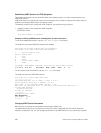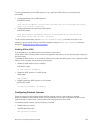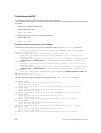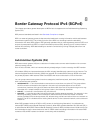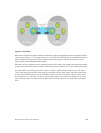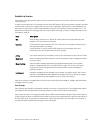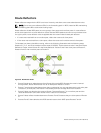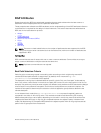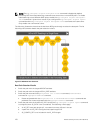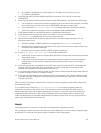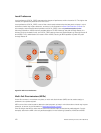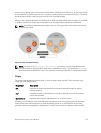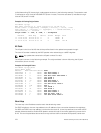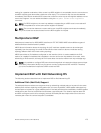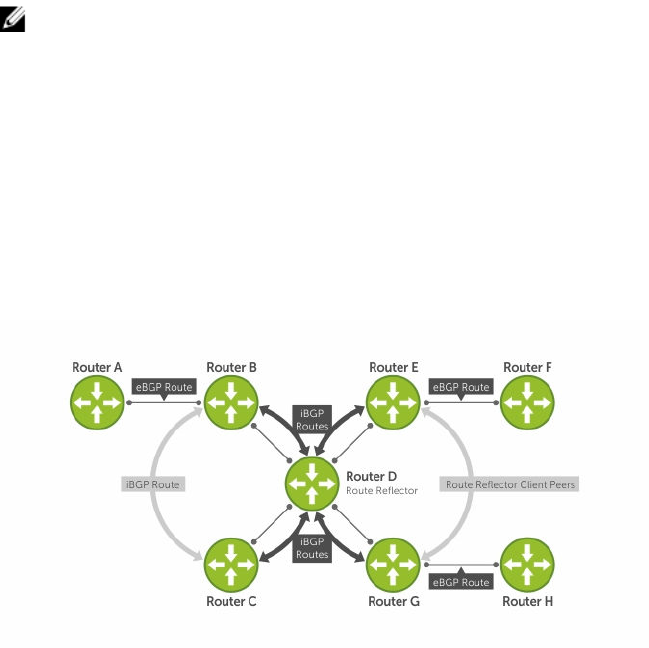
Route Reflectors
Route reflectors reorganize the iBGP core into a hierarchy and allow some route advertisement rules.
NOTE: Do not use route reflectors (RRs) in the forwarding path. In iBGP, hierarchal RRs maintaining
forwarding plane RRs could create routing loops.
Route reflection divides iBGP peers into two groups: client peers and nonclient peers. A route reflector
and its client peers form a route reflection cluster. Because BGP speakers announce only the best route
for a given prefix, route reflector rules are applied after the router makes its best path decision.
• If a route was received from a nonclient peer, reflect the route to all client peers.
• If the route was received from a client peer, reflect the route to all nonclient and all client peers.
To illustrate how these rules affect routing, refer to the following illustration and the following steps.
Routers B, C, D, E, and G are members of the same AS (AS100). These routers are also in the same Route
Reflection Cluster, where Router D is the Route Reflector. Router E and H are client peers of Router D;
Routers B and C and nonclient peers of Router D.
Figure 19. BGP Router Rules
1. Router B receives an advertisement from Router A through eBGP. Because the route is learned
through eBGP, Router B advertises it to all its iBGP peers: Routers C and D.
2. Router C receives the advertisement but does not advertise it to any peer because its only other peer
is Router D, an iBGP peer, and Router D has already learned it through iBGP from Router B.
3. Router D does not advertise the route to Router C because Router C is a nonclient peer and the
route advertisement came from Router B who is also a nonclient peer.
4. Router D does reflect the advertisement to Routers E and G because they are client peers of Router
D.
5. Routers E and G then advertise this iBGP learned route to their eBGP peers Routers F and H.
168
Border Gateway Protocol IPv4 (BGPv4)



